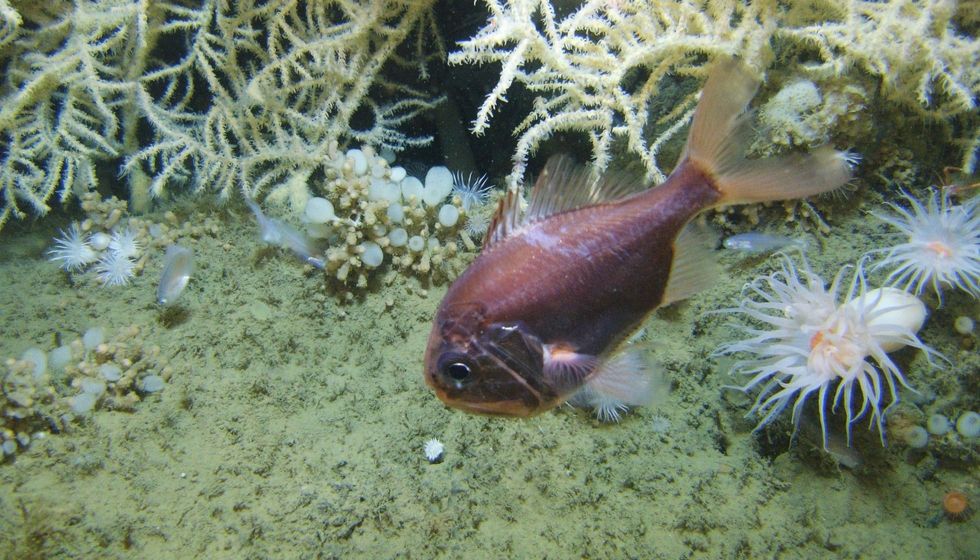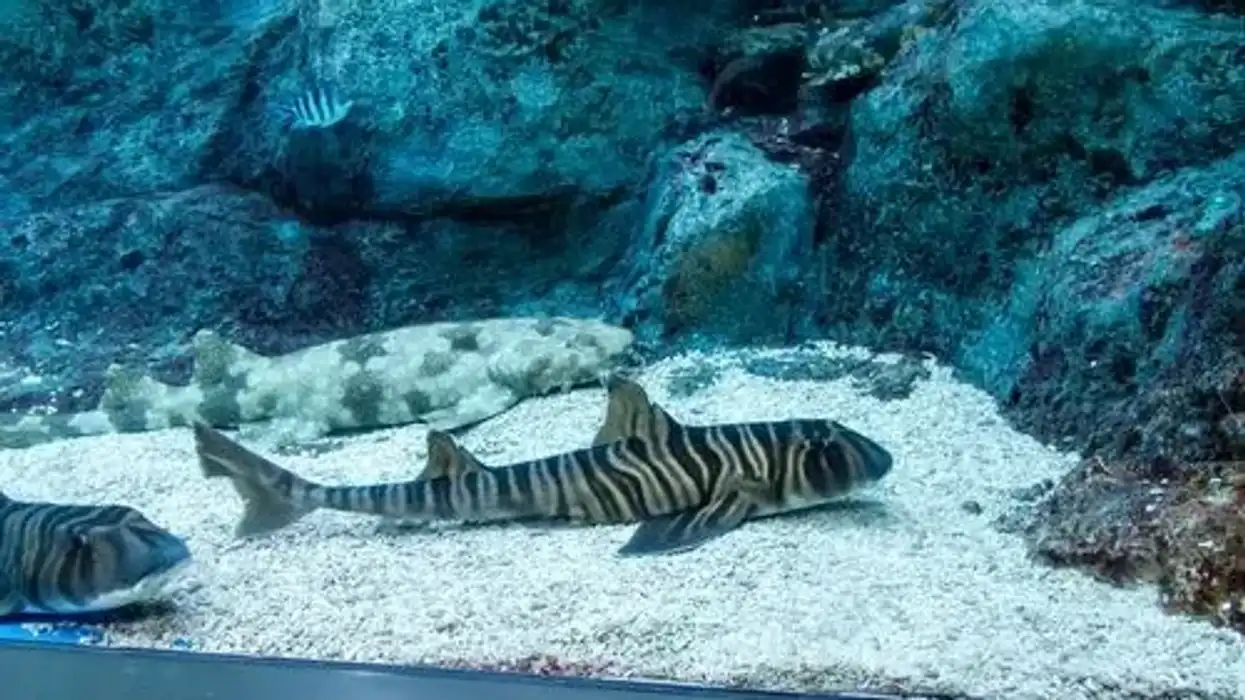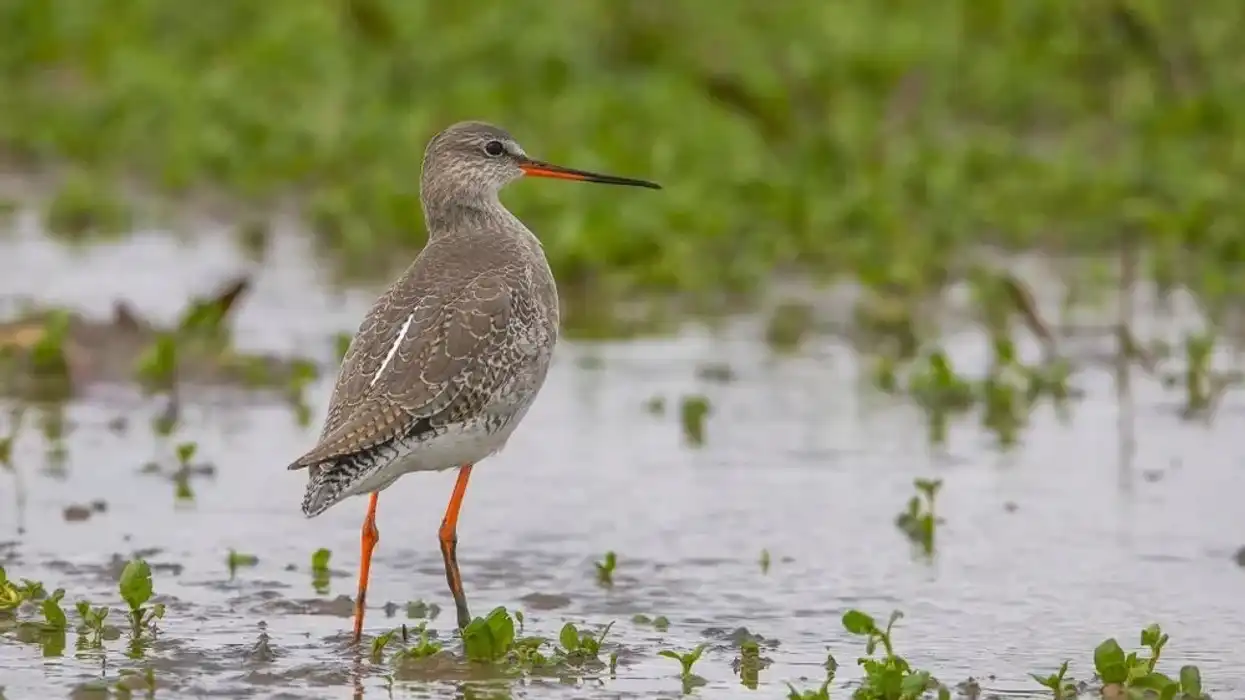The species of orange roughy fish is a slow-growing and long-living marine fish found at great depths in oceans around the world. They are one of the longest living creatures amongst all marine animals as they live for 125-156 years.
In comparison, the bowhead whale lives up to 200 years! This feature has made the fish unique and extremely susceptible to over-exploitation by fisheries. It is a prevalent seafood dish throughout the world.
Since the species gained commercial recognition in the '70s, fisheries began overfishing them, especially fisheries in Australia and New Zealand. The species' name was even changed to orange roughy from the unappealing former name, slimehead, to make the fish seem more appealing to eat!
Fishing orange roughies continuously has negative consequences. The population of this overfished species has declined severely in many places in their range.
However, restoration and recovery measures by fisheries management groups have made their populations more sustainable for the time being. Apart from the name slimehead, they are also known by some other common names like red roughy and deep-sea perch. To know more about this unique fish, you can go through these interesting facts about orange roughy species.
For similar content, check out our articles on herring and catfish too.
Orange Roughy Interesting Facts
What type of animal is an orange roughy?
The orange roughy (Hoplostethus atlanticus) is a type of marine water fish.
What class of animal does an orange roughy belong to?
The orange roughy belongs to the class Actinopterygii, the common class for all ray-finned and bony fishes.
How many orange roughies are there in the world?
The extremely increased rate of fishing of the orange roughy fish species has taken a toll on its numbers. Orange roughies are long-living sea creatures.
As a result, their growth rate lags because they attain maturity at a later age, and accordingly the new generation only starts to spawn after a long period. Recovering from any decline in their population, therefore, take longer than usual for this species.
Most of these fish that are caught in fishing nets lie between the age range 0f 30-50 years. This lowered adult population is reducing the species' reproductive rates, so young fish of this species are rapidly decreasing.
In many places, especially near New Zealand and Australia, fish stocks of this fish nearly became extinct within the first three to 20 years of fishing this species.
Luckily, in many places, they have been partially recovered today. Fishing practices have still left their population highly vulnerable though.
Shallow water and coastal populations have almost vanished today. The exact number of these fish left in the world is not currently known.
Where does an orange roughy live?
The orange roughy has a large distribution. They are found in the Atlantic Ocean, the western Pacific Ocean, the Indo-Pacific Ocean, the Mediterranean Sea, and in the eastern Pacific Ocean off the coast of Chile.
In the eastern Atlantic, this species of fish occurs from Iceland to Morocco. In Africa, they stretch from the Walvis Bay of Namibia to Durban in South Africa. A small population occurs in the western North Atlantic around the Gulf of Maine.
The Indo-Pacific distribution is the most famous orange roughy range, and it is here where they are highly overfished. This includes the coasts of Oceania near Australia and New Zealand. In Australia, these slimeheads live in southern Australian deep waters.
Their distribution extends from New South Wales to eastern Tasmania in the south and up to south-western Australia in the west. They are also found in the seas of New Zealand.
What is an orange roughy's habitat?
The orange roughy is a deep sea-dwelling species that is found in temperate waters around the world. It lives just above the seafloor, inhabiting the steep continental slopes, seamounts, and ocean ridges.
They prefer to stay in areas where the water current is strong. The orange roughies are found in chilly water and at depths ranging between 590-5,910 ft (180-1,800 m). However, they are rarely found above 2296 ft (700 m).
During the breeding season, the fishes aggregate from 16.4-33 ft (5-10 m) above the sea bed. These aggregations occur only near hard and rocky surfaces like around submerged hills or pinnacles.
Who does orange roughy live with?
Orange roughies are often found to gather in large groups for spawning or feeding. However, different types of aggregations are observed among these fish depending on the season.
For example, in winter, the species gather to perform breeding activities. Non-breeding gatherings of the orange roughy species occur only in summer and fall. They generally live in densely populated groups which become denser during the breeding season.
How long does an orange roughy live?
There has been much confusion about the lifespan of the orange roughy species. When the fish first came to the market, it was believed that they only lived to about 30 years of age.
Later in the '90s, it was discovered that the orange roughy lived a much longer life than that. The average lifespan of the fish is now estimated to be between 125-156 years! However, much older specimens have been discovered in many places.
In 2015, an orange roughy of 230 years old was caught in New Zealand, while in Tasmania, the oldest fish ever caught had a record age of 250 years! In comparison, the bowhead whale lives up to 200 years.
How do they reproduce?
This marine species is a pelagic spawner, like angelfish, which means they travel long distances from their natural habitats to breed in large groups. The breeding season of these roughies commences around June and lasts until July.
Males spawn for up to two weeks while females spawn for a week. The orange roughy partakes in broadcast spawning and all the males and females of a group are synchronized.
They release several sperm and eggs together into the water column. The fertilized eggs are then protected by the large aggregations of adults from common egg predators.
Females produce 10,000-90,000 eggs in a clutch, and they hatch 10-20 days after fertilization. The orange roughy has a long lifespan, and accordingly, they mature at a relatively old age, between 29-40 years.
What is their conservation status?
The species of orange roughies are Not Evaluated formally in the IUCN Red List. However, constant exploitation and overfishing by fisheries has left them highly endangered in their natural habitat.
The late maturity of each new generation delays the growth of their population, while in the meantime adult species are constantly being fished. To restore the population of these fishes, their fishing trends should be carefully assessed and monitored especially in New Zealand and Australia, where these roughies are the most vulnerable.
Orange Roughy Fun Facts
What does orange roughy look like?
The orange roughy (Hoplostethus atlanticus) has a laterally compressed oval-shaped body that is brick red in color. The interior of their mouth and gill cavities are bluish-black.
Their bony head contains muciferous canals that produce mucous. For this reason, the fish is also known as a slimehead. Their anal and dorsal fins are made up of numerous spines and rays.
Their pectoral fins are made up of soft rays, while their pelvic fin consists of a single spine and six rays. A bony and hard ridge is formed by the modification of their scales into scutes between the anus and the pelvic fin.

*Please note that the main image and this image are of an Atlantic roughy (Hoplostethus occidentalis), a fish from the same genus as the orange roughy. If you have images of the orange roughy, please let us know at hello@kidadl.com.
How cute are they?
The fish has large round eyes, which makes the orange roughy look quite cute and its body color is also beautiful.
How do they communicate?
There is no information available about the communication methods of this fish. Scientists have discovered that they have mucous canals that release mucous, which indicates that they might communicate by releasing chemical cues.
How big is an orange roughy?
Orange roughies are the largest fish among all members of the family of slimeheads. Their average length ranges from 14-18 in (35-45 cm). The longest roughy had a record length of 30 in (75 cm)!
How fast can an orange roughy swim?
These roughies are mostly sedentary. They do not show any movement unless it is necessary, such as during spawning migrations. For this reason, their speed is not determined.
How much does an orange roughy weigh?
Orange roughies can reach a maximum weight of 15 lb (7 kg).
What are the male and female names of the species?
Male and female fish of this species do not have any specific names, both of them are called orange roughies.
What would you call a baby orange roughy?
A baby orange roughy is called a fry.
What do they eat?
The orange roughy's diet changes according to its age and size. As juveniles, they feed on shrimps or prawns while larger ones eat small fish from oceans. The diet of the largest fish of this species consists of squids.
Are they poisonous?
These fish are not dangerous or toxic, however, due to their long lifespan, older fish might have a high mercury content in their body, and consuming them can have adverse effects on our health.
Would they make a good pet?
No, they do not make good pets. Only nature can provide them with a stable habitat for their long lives.
Did you know...
The age of orange roughies is discovered by looking at the ear bone or otolith present in its body. Dating of sedimented isotopes has given us a rough estimate of their age.
Do they bite?
They are deep water fish, so they generally do not come in contact with humans and as a result, there is no evidence of them biting humans.
Do humans eat them?
Yes, the tasty roughy flesh has a fresh and mild flavor, and the fish is sold in various forms: skinned, filleted, fresh, or toned. Their meat also has some high nutritional values, making them relatively healthy for human beings.
The vitamins, minerals, and acids present in this fish's meat help in maintaining our cell, muscle, and hair health, prevent anemia and make our bones stronger.
Here at Kidadl, we have carefully created lots of interesting family-friendly animal facts for everyone to discover! Learn more about some other fish from our Siamese fighting fish facts and cuttlefish facts pages.
You can even occupy yourself at home by coloring in one of our free printable orange roughy coloring pages.










